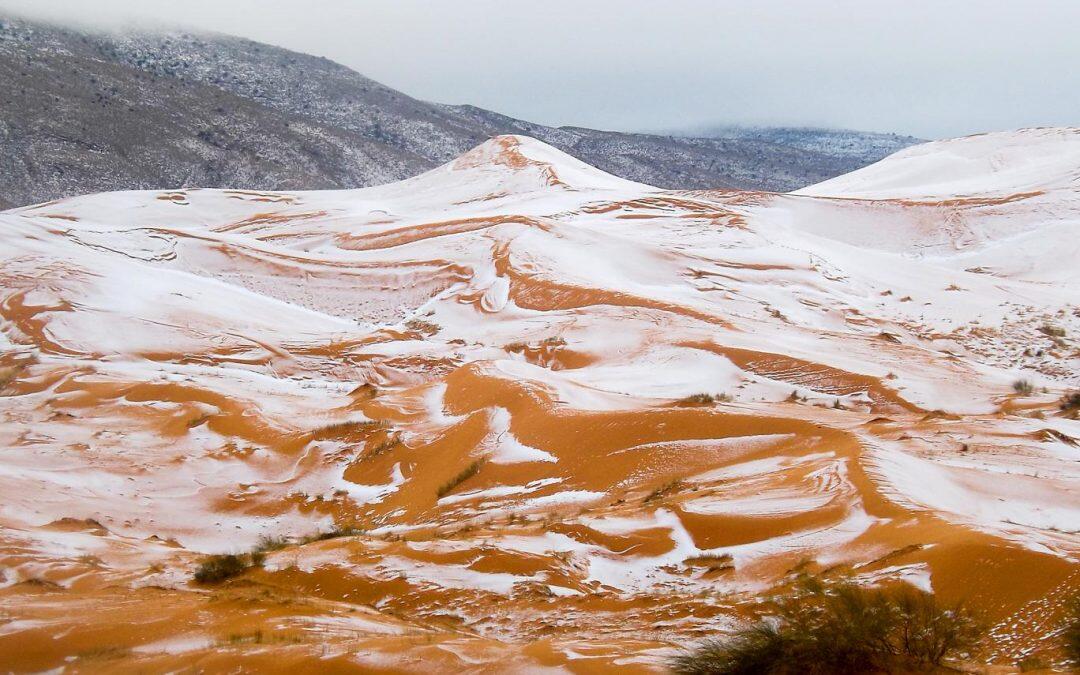It rarely rains or snows in the desert, especially if it wasn’t one of the polar deserts, which are defined by The USGS as “areas with annual precipitation less than 250 millimeters and a mean temperature during the warmest month of less than 10° C”.
Polar deserts are mostly bedrock or gravel plains. Sand dunes are not prominent features in these deserts, but snow dunes occur commonly in areas where precipitation is locally more abundant. Temperature changes in polar deserts frequently cross the freezing point of water. This “freeze-thaw” alternation forms patterned textures on the ground, as much as 5 meters in diameter.
This article is not to tell you only about polar deserts, or about the rarity of snowing in these regions. It is about beautiful photographs that were captured in the Sahara desert, revealing snow that showed up after 40 years in that place.
The Independent reported that “Amateur photographer Karim Bouchetata, photographed the fleeting scene on Monday in the small Algerian town of Ain Sefra, which lies in the Atlas Mountains on the northern edge of the desert”.
It added that “In his images a thin layer of snow rests on deep orange dunes, where he said it stayed for about a day, and forms whirling patterns where the slopes are too steep for it to settle. Snow was reportedly last seen in Ain Sefra in 1979, when a half-hour snowstorm stopped traffic”.
Bouchetata said: “Everyone was stunned to see snow falling in the desert, it is such a rare occurrence. It looked amazing as the snow settled on the sand and made a great set of photos”.
He added: “The snow stayed for about a day and has now melted away.”
The reason behind snowing in Algeria at this point is unknown, although it usually snows in other parts of the country, which hosts part of the Atlas Mountain range.
The range extends some 2,500km across northwestern Africa, and the mountains get a lot of rainfall, and snow in the higher parts.











